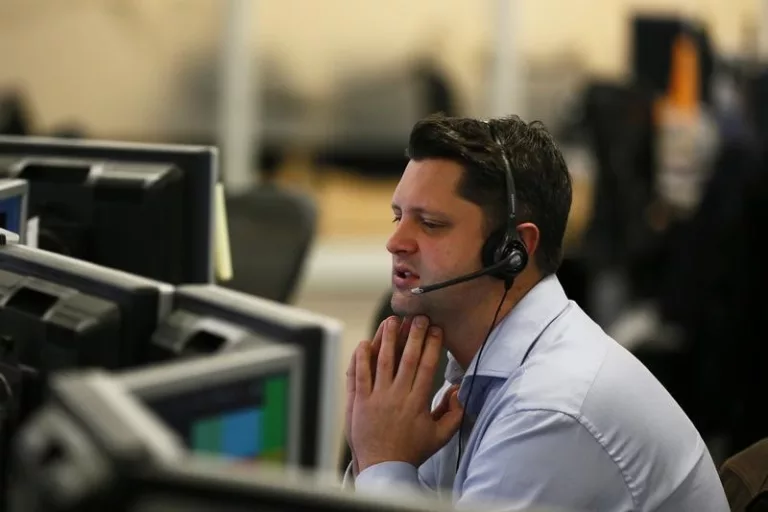If you’re looking to add some kick to your retirement portfolio, here are 12 investments that do not seem obviously worse than anything else: the Sprott Physical Silver
PSLV
and Gold
PHYS
trusts, Canadian food company Lassonde
LAS.A,
Hong Kong-based pork giant WH Group
WHGLY,
power utility Avista
AVA,
telecom-software company Amdocs
DOX,
recruitment and staffing companies TrueBlue
TBI,
and Kelly Services
KELYA,
garage chain Monro
MNRO,
car-parts supplier Advance Auto Parts
AAP,
children’s clothing manufacturer Carter’s
CRI,
and academic publisher John Wiley & Sons
WLY,
Those, at least, are the investments being favored right now by Palm Valley Capital Fund PVCMX — possibly the best small-cap stock pickers you’ve never heard of.
Palm Valley managers Jayme Wiggins and Eric Cinnamond have achieved the difficult feat of beating the Russell 2000
RUT
and S&P 600
SML
small-cap indexes over the past several years — while hardly investing in stocks at all.
No, really.
Palm Valley Capital held just 20% of its portfolio in stocks for most of last year — much as it did in 2022, 2021 and 2020. The rest of the money was held in short-term Treasury bills. In 2019, the year the fund launched, the share of the portfolio in the stock market was typically 10%. Or less.
Nuts? Sure.
Except …
Over that period, the few small-company stocks that the fund did own have blown out the market. Last year, the fund’s stock picks earned 33%, twice the return of the small-cap indexes. In 2022, a disastrous year for the markets overall, Palm Valley’s stocks earned 13%, while the small-cap indexes plunged by 15% or more. In 2020, the fund’s stocks earned 25%, way ahead of the indexes.
The fund charges 1.3% a year in fees for regular shares, and 1% for those willing to invest $500,000 or more. As of June last year, the fund had $221 million in assets.
Whether you want to embrace Palm Valley’s ultracautious approach, holding lots of cash until you find great investments, is another question. The fund is a so-called absolute-return fund, meaning it values the return of capital more than the return on capital. That is a major reason it has held so much cash.
These days, rightly or wrongly, conventional wisdom on Wall Street advises separating asset-allocation and stock-picking roles. You first decide how much you want in the stock market. Then you invest that money, generally via low-cost index funds. An absolute-return strategy, where someone combines the two roles, is very old-school.
But there’s no arguing with these managers’ stock-picking skills over their almost five years running this mutual fund. Overall, while mostly sitting on the sidelines in Treasury bills, the fund has still posted a 41% total return since its launch in April 2019.
The broad Russell 2000 small-cap index, as tracked by the low-cost iShares Russell 2000 ETF
IWM,
has gone up 31% over the same period.
And the regular index has exposed investors to vastly greater risk. That included two double-digit swoons last year, when Palm Valley’s maximum decline was about 1%, and the 30% collapse during the COVID panic of March 2020, when Palm Valley fell about 5%.
The 12 names listed at the start of this article constitute the fund’s 10 biggest holdings at the start of this year — led by the silver trust — plus the two stocks it recently started buying.
Wall Street has been warming up to small-caps lately. According to the most recent BofA Securities survey, money managers are more bullish on small-caps than they have been in several years.
The argument in favor of small-caps is that they offer higher returns than large-company stocks, albeit with much greater volatility. This is why investors are often advised to allocate a small portion of their 401(k), IRA or other retirement account to a small-cap fund.
Whether that argument is right is another matter. As Palm Valley Capital’s performance suggests, small-caps may be attractive for a completely different reason: because they offer more opportunities for stock pickers.
Meanwhile, Wiggins and Cinnamond warn against getting too bullish on small-caps overall. The stocks in the small-cap indexes are nowhere near as cheap, on average, as they at first appear, they write.
The reason? The stocks that look cheap are mostly low-quality junk. Prior to the 2008 financial crisis, about 20% of the companies in the Russell 2000 were unprofitable, they recall, but “today, it’s 40%.”
And they calculate that the median net income for companies in the index is about the same as or lower than it was in 1998, a quarter-century ago. And that’s in nominal dollars — in other words, before deducting inflation.
Meanwhile, the high-quality, profitable stocks in the Russell 2000 have pretty much kept up with large-cap stocks. Over the past few years, “small-cap returns have not been dramatically different from large-caps when you eliminate the junk,” Wiggins and Cinnamond write. “Most quality small-caps never became cheap, in our opinion.”
There again, if someone is keeping 80% of their money in Treasury bills, would you expect them to say anything different?
Reference :
Reference link
























+ There are no comments
Add yours